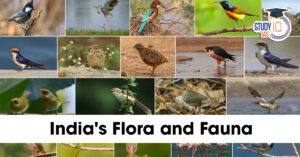Current Affairs 8th June 2023 for UPSC Prelims Exam
Cotton Cultivation in India
Context: It is expected that area under cotton cultivation will shrink during this kharif season, according to experts.
Why area under cotton cultivation is likely to shrink this kharif?
- Price Disparity: Farmers have experienced a significant decline in cotton prices compared to the previous year. Despite the government’s minimum support price (MSP), the current market rates for cotton are lower than what farmers had anticipated.
- In contrast, crops like tur/arhar (pigeon-pea) are fetching higher prices, making them more attractive to farmers.
- Monsoon Uncertainties: The southwest monsoon, crucial for cotton cultivation, has shown delayed onset and erratic patterns. With predictions of unfavorable weather conditions such as El Niño, there is uncertainty surrounding the monsoon season.
- Crop Duration: Cotton is a long-duration crop that requires multiple pickings over a period of 4-5 months. Farmers are preferring crops with shorter durations as it allows them to cultivate a second crop during the rabi (winter-spring) season, maximizing their yield and income.
About Cotton Crop
- It is a Kharif Crop that comes from the natural fibres of cotton plants, which are native to tropical and subtropical regions.
- Conditions required for cotton cultivation:
- It requires high temperature and bright sunshine for its growth. Cotton requires a clear sky during the flowering stage.
- Only light rainfall (50 to 100 centimetres) is preferred. Cotton can also be cultivated under irrigated conditions.
- Hard frost is injurious to cotton cultivation and it requires at least 210 frost-free days.
- A light well-drained soil capable of retaining moisture is ideally suited for the cultivation of the crop. Black cotton soil is preferred.
- Cotton plants have a large growing period which can extend up to 200 days. Growing cotton starts between December and March.
- The cotton is not a thirsty crop as it is a xerophyte, which can grow in dry, arid environments.
Cotton cultivation in India
- Cotton is one of the most important commercial crops cultivated in India and accounts for around 25% of the total global cotton production.
- It provides the cotton textile industry with its primary raw material, cotton fibre.
- India is the largest producer of cotton in the world and the third largest exporter. It is also the largest consumer of cotton in the world.
- India is the country to grow all four species of cultivated cotton G.arboreum and Herbaceum (Asian cotton), G.barbadense (Egyptian cotton) and G. hirsutum (American Upland cotton).
- G.hirsutum represents 94% of the hybrid cotton production in India and all the current Bt cotton hybrids are G.hirsutum.
- In India, majority of the cotton production comes from ten major cotton growing states, which are grouped into three diverse agro-ecological zones, as under: –
- Northern Zone – Punjab, Haryana and Rajasthan.
- Central Zone – Gujarat, Maharashtra and Madhya Pradesh.
- Southern Zone – Telangana, Andhra Pradesh, Karnataka and Tamil Nadu.
- Top Cotton Producing States in India are Gujarat, Maharashtra. Telangana, Andhra Pradesh.
- Now India’s premium Cotton would be known as ‘Kasturi Cotton’ in the world cotton Trade. The Kasturi Cotton brand will represent Whiteness, Brightness, Softness, Purity, Luster, Uniqueness and Indianness.
Current Affairs 7th June 2023 for UPSC Prelims Exam
Cyclone Biparjoy
Context: Cyclone Biparjoy in the Arabian Sea has intensified into a ‘very severe cyclone’.
More on the News:
- The cyclone has received favoured from exceptionally warm Arabian Sea, a weak monsoon onset, and favourable Madden Julian Oscillation (MJO) conditions in the Indian Ocean.
- The cyclone is currently located about 850 km west of Goa and is expected to move northwards and turn towards Oman in the coming days.
- The cyclone will help the monsoon onset in Kerala within the next 48 hours, but it will delay the ascent up the Western coast.
What is a Tropical Cyclone?
- Tropical cyclone is a low-pressure system that forms over warm tropical waters and move over to the coastal areas bringing violent winds, very heavy rainfall and storm surge.
- The wind direction in the cyclone is anti-clockwise in the northern hemisphere & clockwise in the southern hemisphere.
- Conditions for formation:
- Sea temperature: A large sea surface with a temperature higher than 27° C is suitable for formation of tropical cyclones.
- Location: Tropical cyclones form in areas between Tropic of Cancer and Tropic of Capricorn where the temperature is optimum.
- Coriolis force: The formation requires presence of the Coriolis force. Hence, they are formed away from the equator.
- Vertical wind speed: There must be small variations in the vertical wind speed.
- Upper divergence: A well-developed divergence in the upper layers of the atmosphere is required for maintaining a low pressure at the center.
- High humidity: High humidity (around 50 to 60 per cent) is required in the mid-troposphere for the formation of cumulonimbus cloud.

Mechanism:

Difference between Tropical and Temperate Cyclones:

Fermi Energy
Context: Electrons in metallic objects have an effective temperature of tens of thousands of degrees celsius because of the Fermi energy.
About Fermi Energy
- Fermi energy refers to the energy difference between the highest and lowest occupied single-particle states in a quantum system of non-Interacting fermions.
- Fermi energy is a concept in quantum mechanics.
- It usually refers to the energy difference between the highest and lowest occupied single-particle states in a quantum system of non-interacting fermions at absolute zero temperature.
- The Fermi level is named after the physicist, Enrico Fermi, and it represents the amount of energy held by the electrons in a solid.
- The value of the Fermi level at absolute zero temperature is referred to as the Fermi energy.
- The maximum energy that an electron can achieve is 0K.
- The Fermi energy is always the same for each solid.

About Fermi Level
- At absolute zero temperature, the electrons are in the lowest energy state, and that’s why the Fermi level is between the valence band and the conduction band.
- The sea of fermions above which no electrons exist is referred to as the Fermi level due to the fact that there is sufficient energy.
- The Fermi level changes as the solid are warmed and the electrons are added to or removed from it.
Fermi Energy Level
- The existence of this energy level is due to Pauli’s exclusion principle, which states that two fermions cannot occupy the same quantum state.
- Each fermion has a set of magnetic quantum numbers associated with it, so if a system has more than one fermion, each fermion has a different set of magnetic quantum numbers.
- The energy of the Fermi level divided by Boltzmann’s constant is known as the Fermi temperature.
- Temperature at which the electron’s energy is equal to the Fermi energy is also known as the temperature of the electron.
- The electrons in the lower states of energy in metal are measured.
Fermi Energy Application
- It can be used in insulators and semiconductors.
- The electrical and thermal characteristics of the solids can be determined with the help of Fermi energy.
- Understanding the stability of white dwarfs is an important part of nuclear physics.
- White dwarfs are stars that have a fraction of the mass of the Sun but have the same amount of radius.
Gulf of Mannar Marine National Park
Context: Recently, Director of Gulf of Mannar Marine National Park, Jagdish S Bakan, has bagged United Nations Educational, Scientific and Cultural Organization (UNESCO) Michel Batisse Award for 2023.
- The award is given for outstanding achievements in the management of the biosphere reserves in line with the recommendations of the Seville Strategy.
- The $12,000 reward will go to the State government and the Gulf of Mannar Biosphere Reserve Trust.
About Gulf of Mannar Marine National Park
- Gulf of Mannar Marine National Park occupies a total area of 6.23 sq km, and it is the first biosphere reserve that was established in India in the year 1983.
- Gulf of Mannar is an inlet of the Indian Ocean between India and Sri Lanka.
- The entire 21 small islands of the Gulf of Mannar Marine National Park come under the sphere of Marine National Park.
- It is spread across an area of 560 sq.kms., the biosphere covers the coasts of Thoothukudi, Tirunelveli, Rameswaram and Kanyakumari.
- It is endowed with three distinct coastal ecosystems namely coral reef, seagrass bed and mangroves.
- It has the highest concentration of seagrass species along India’s coastline.
- Seagrass beds in the Gulf serve as ideal feeding ground for Dugong (commonly known as sea cow), the endangered herbivorous marine mammal.
- Ecosystem types: Tropical Dry Broad-leafed Forest, seaweed communities, sea grass communities, coral reefs, salt marshes, and mangrove forests.
- Endemic Flora: Morning glory, Jatropha, Halophila grass
- Fauna: Dugong, an endangered marine mammal, Sea Anemone, Sea fans.
- It has recorded some 117 species of hard Coral.
- It is home to different vulnerable whales like humpback whales, blue whales, fin whales, etc.
- It is also recognized as a Wetland of International Importance, i.e., Ramsar site.

Ground-Level Ozone
Context: According to Centre for Science and Environment (CSE), parts of the Delhi-NCR region witnessed ground-level ozone readings exceeding the national standards on 87 out of 92 days in the summer period between March and May.
About Ground-Level Ozone
- Also known as tropospheric ozone, ground-level ozone is “a colourless and highly irritating gas that forms just above the Earth’s surface (up to 2 miles above the ground).
- It’s not directly emitted into the air but rather produced when two primary pollutants react in sunlight and stagnant air.
- These two primary pollutants are nitrogen oxides (NOx) and volatile organic compounds (VOCs).
- About 95 per cent of NOx from human activity comes from the burning of coal, gasoline and oil in motor vehicles, homes, industries and power plants.
- VOCs from human activity come mainly from gasoline combustion and marketing, upstream oil and gas production, residential wood combustion, and from the evaporation of liquid fuels and solvents.
- Ground-level ozone is also called a “secondary” pollutant.

Harmful Effect of Ground-Level Ozone
- On Health: It is a highly reactive gas and has serious health consequences.
- Those with respiratory conditions, asthma, chronic obstructive pulmonary disease, and particularly children with premature lungs and older adults are at risk.
- It can inflame and damage airways, make lungs susceptible to infection, aggravate asthma, emphysema, and chronic bronchitis and increase the frequency of asthma attacks leading to increased hospitalisation.
- On Environment: The pollutant can also affect sensitive vegetation and ecosystems, including forests, parks and wildlife refuges.
- It can harm sensitive vegetation during the growing season too.


 TNPSC Group 4 Admit Card 2025 Out at tnp...
TNPSC Group 4 Admit Card 2025 Out at tnp...
 Species Added to India's Flora and Fauna...
Species Added to India's Flora and Fauna...
 Daily Quiz 02 July 2025
Daily Quiz 02 July 2025





















